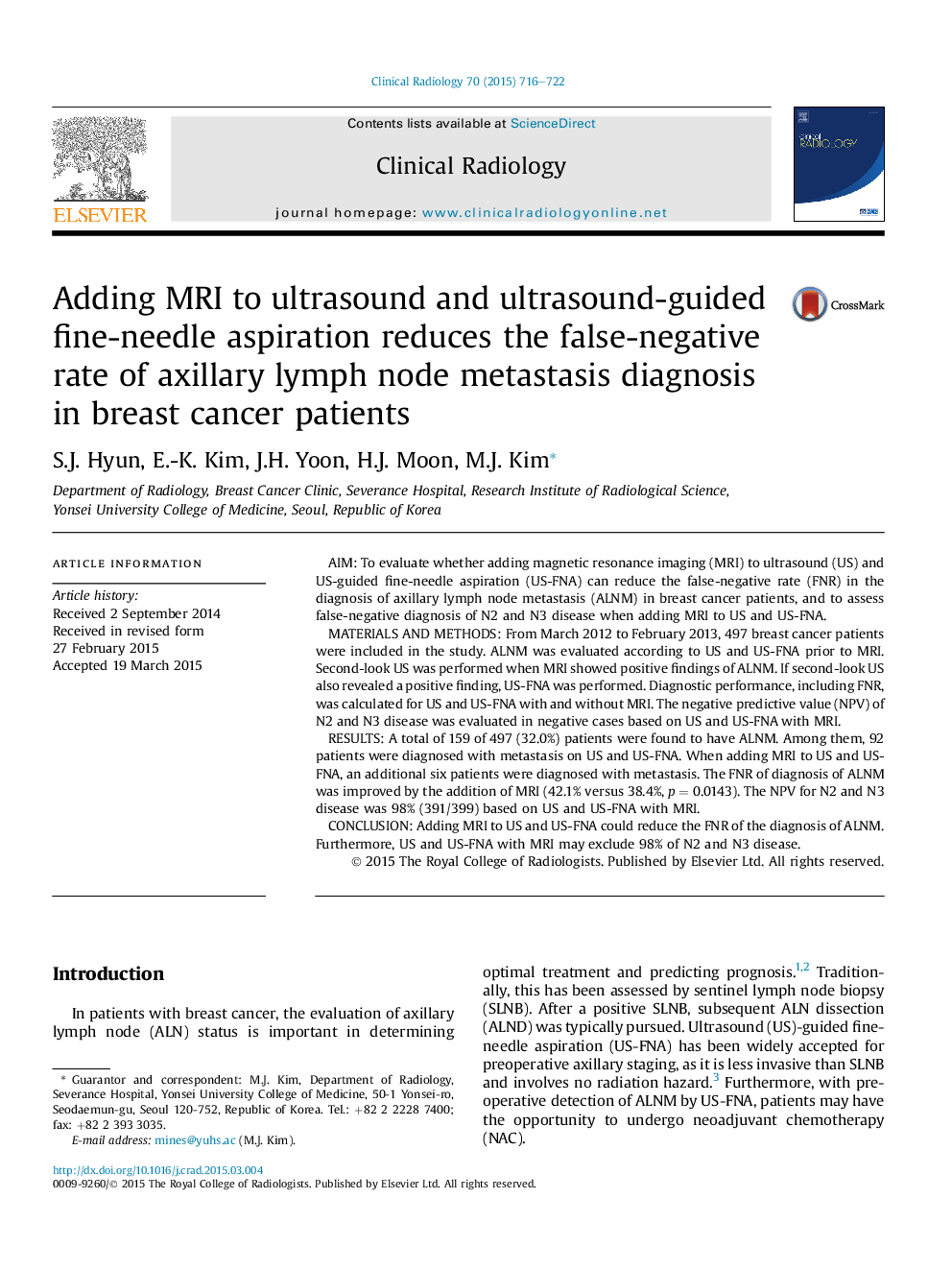| Article ID | Journal | Published Year | Pages | File Type |
|---|---|---|---|---|
| 6190842 | Clinical Radiology | 2015 | 7 Pages |
â¢Adding MRI to US and US-guided FNA can reduce the FNR in the diagnosis of axillary nodal metastasis in breast cancer patients.â¢Preoperative US and US-FNA with MRI can exclude 98.0% of N2 and N3 disease.
AimTo evaluate whether adding magnetic resonance imaging (MRI) to ultrasound (US) and US-guided fine-needle aspiration (US-FNA) can reduce the false-negative rate (FNR) in the diagnosis of axillary lymph node metastasis (ALNM) in breast cancer patients, and to assess false-negative diagnosis of N2 and N3 disease when adding MRI to US and US-FNA.Materials and methodsFrom March 2012 to February 2013, 497 breast cancer patients were included in the study. ALNM was evaluated according to US and US-FNA prior to MRI. Second-look US was performed when MRI showed positive findings of ALNM. If second-look US also revealed a positive finding, US-FNA was performed. Diagnostic performance, including FNR, was calculated for US and US-FNA with and without MRI. The negative predictive value (NPV) of N2 and N3 disease was evaluated in negative cases based on US and US-FNA with MRI.ResultsA total of 159 of 497 (32.0%) patients were found to have ALNM. Among them, 92 patients were diagnosed with metastasis on US and US-FNA. When adding MRI to US and US-FNA, an additional six patients were diagnosed with metastasis. The FNR of diagnosis of ALNM was improved by the addition of MRI (42.1% versus 38.4%, p = 0.0143). The NPV for N2 and N3 disease was 98% (391/399) based on US and US-FNA with MRI.ConclusionAdding MRI to US and US-FNA could reduce the FNR of the diagnosis of ALNM. Furthermore, US and US-FNA with MRI may exclude 98% of N2 and N3 disease.
